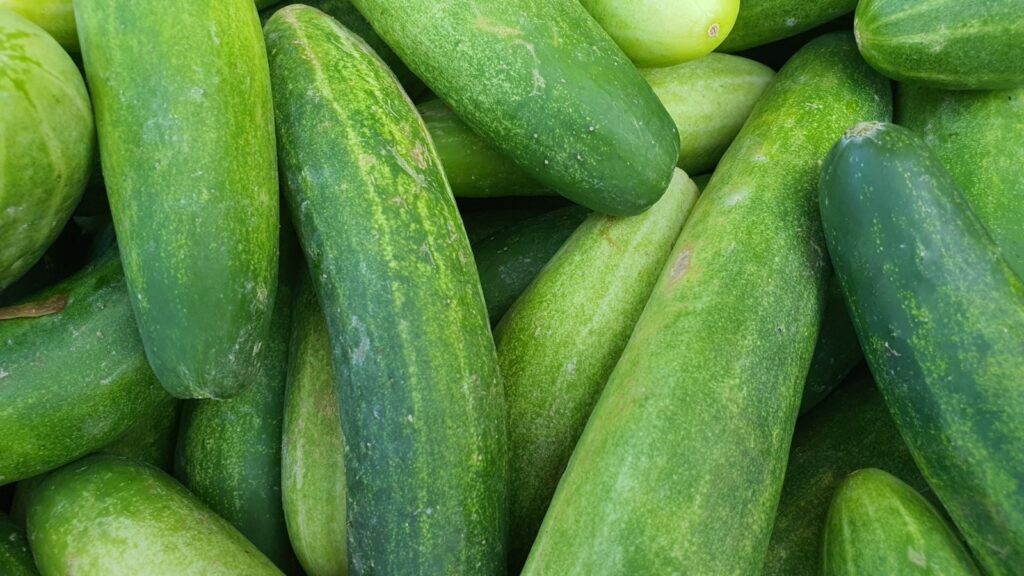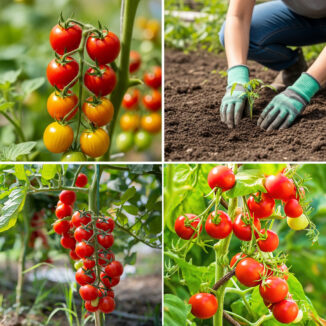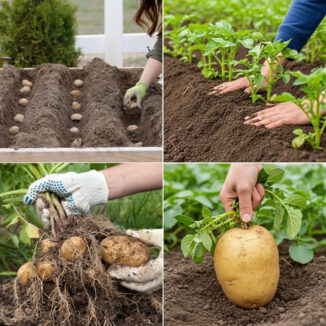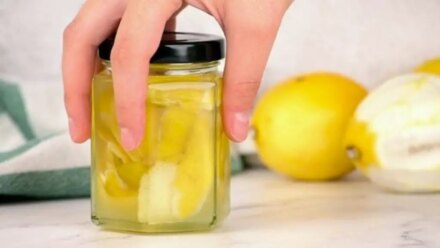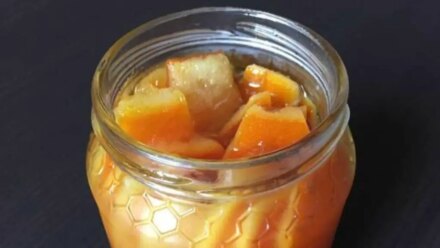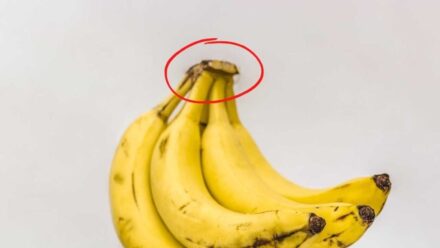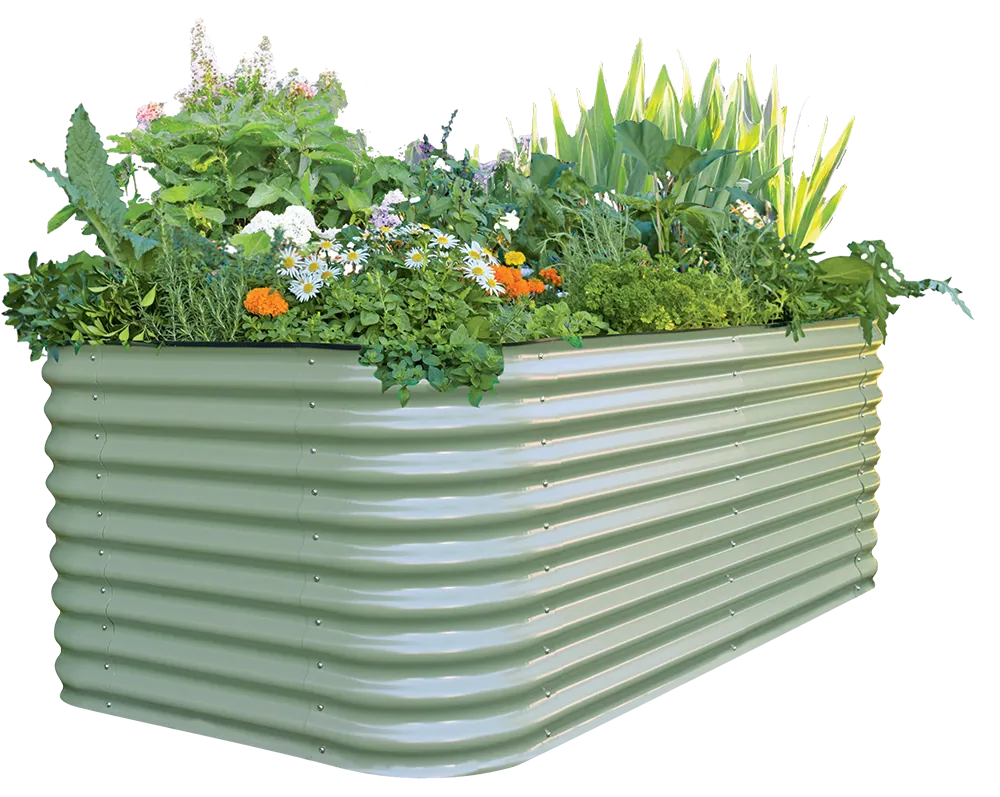Por que as folhas do pepino estão amarelas? Descubra 7 razões e como resolver o problema
Os pepinos são um dos vegetais de jardim mais prolíficos quando estão saudáveis. Eles podem rapidamente subir sobre nossas cabeças e produzir quilos de pepinos crocantes a cada semana. E que delícia isso é!
No entanto, as plantas de pepino também são suscetíveis a vários problemas ambientais, doenças e pragas. Mesmo que você não saiba o que está afligindo suas plantas de pepino, observar as folhas verdes se tornarem amarelas é uma maneira óbvia de perceber que algo deu errado. Mas o que, exatamente?
Folhas amarelas podem indicar uma variedade de problemas, incluindo questões com água, luz e nutrientes. Vou abordar sete motivos pelos quais seus pepinos podem estar ficando amarelos para que você possa remediar a causa das folhas amarelas.
Muita Água
Como jardineiros, muitas vezes amamos nossas plantas até a morte. Uma maneira disso acontecer é regando demais nossas plantas. Embora as plantas de pepino precisem de água para crescer e permanecer saudáveis, água em excesso pode impedir que as raízes absorvam nutrientes e realizem a troca gasosa. Também pode aumentar as chances de as plantas desenvolverem doenças fúngicas.
Se você regar demais sua planta de pepino, as raízes permanecerão sentadas na água. Isso estressa a planta e limita sua capacidade de realizar processos cruciais como a fotossíntese. Se as raízes apodrecerem, elas não serão capazes de absorver os nutrientes e a água necessários. Esse estresse eventualmente leva às folhas amarelas.
Então, quanto de água é demais? Geralmente, o solo em que seus pepinos estão crescendo deve permanecer úmido, mas não encharcado. Ao determinar com que frequência regar suas plantas de pepino, você deve considerar os seguintes fatores:
Chuva
Pare de regar se o solo estiver úmido a seis polegadas de profundidade.
Pode parecer óbvio, mas se o solo estiver molhado pela chuva, provavelmente você não precisa regar sua planta de pepino. Digo provavelmente porque a quantidade de chuva determina se suas plantas recebem água suficiente. Uma chuva curta e suave pode fazer a superfície do solo parecer úmida, mas o solo ainda pode estar seco a quatro ou seis polegadas de profundidade. Portanto, não assuma que uma superfície de solo molhada significa que você pode pular a rega.
Meio polegada ou mais de chuva geralmente significa que você pode pular a rega planejada. Se você não tem certeza se suas plantas receberam água suficiente, você pode cavar em uma parte do solo a um metro de distância do seu pepino. O solo que estiver úmido a seis polegadas abaixo da superfície é suficiente para pular a rega.
Temperatura
As taxas de transpiração diminuem com temperaturas mais baixas e aumentam com temperaturas mais altas.
Você sabe como precisamos beber mais água quando está quente lá fora? Bem, as plantas de pepino são da mesma forma. À medida que as temperaturas aumentam, as plantas de pepino se resfriam por meio de um processo chamado transpiração. Durante a transpiração, as plantas abrem poros nas folhas chamados estômatos para liberar vapor d’água. A conversão da água de líquida para gasosa resfria a planta.
Temperaturas baixas coincidem com taxas reduzidas de transpiração. Além disso, altas temperaturas fazem a água evaporar do solo mais rapidamente. Portanto, as plantas precisam de menos água durante os períodos mais frios do ano e mais água durante os períodos quentes.
Umidade
Regue suas plantas com mais frequência durante períodos secos em comparação com períodos úmidos.
A umidade também desempenha um grande papel nas taxas de transpiração; as plantas perdem menos água por suas folhas se já houver muito vapor d’água no ar. No entanto, o ar seco acelera a transpiração. Portanto, planeje regar suas plantas mais durante os períodos secos do que durante os períodos úmidos.
Tipo de Solo
Argila e matéria orgânica aumentam a retenção de água.
Basta pensar em uma praia de areia e um vaso de argila para entender como o tipo de solo impacta o movimento da água. À medida que as ondas lavam a praia, a água penetra rapidamente na superfície e percola no solo. A mesma coisa acontece se você derramar uma bebida. No entanto, se você derramar água em um vaso de argila sem esmalte, a água formará uma poça antes de se mover lentamente pela argila. A única diferença entre areia e argila é o tamanho das partículas do solo.
Como a areia consiste em partículas maiores, há mais espaço de ar por onde a água pode viajar. As pequenas partículas de argila podem se compactar, levando a pequenos espaços de ar e movimento lento da água. Como o solo contém uma combinação de argila, silte, areia e matéria orgânica, a quantidade de cada material impacta o movimento da água.
Geralmente, a areia aumentará a drenagem do solo e o incentivará a regar suas plantas com mais frequência. A argila e a matéria orgânica aumentam a capacidade de retenção de água do solo, então você não precisará regar o solo com tanta frequência.
Mulch
Camadas mais espessas de cobertura morta são mais eficientes do que as mais finas.
Adicionar cobertura morta à superfície do solo limita a evaporação. Portanto, você pode planejar regar o solo coberto com cobertura morta com menos frequência do que regaria o solo sem cobertura morta. O tipo de cobertura morta não importa, mas uma camada espessa de cobertura morta manterá o solo mais úmido do que uma camada fina de cobertura morta.
Pouca Água
Garanta que as plantas de pepino recebam regas profundas, mas não frequentes.
Assim como água em excesso pode causar problemas para as plantas de pepino, a falta de água também pode. As plantas de pepino têm uma grande superfície foliar, então perdem muita água por transpiração. Além disso, como os frutos têm um alto teor de água e crescem rapidamente, as plantas de pepino precisam de muita água para produzir pepinos saudáveis e crocantes.
Se suas plantas de pepino não recebem água suficiente, elas murcham. A falta de água também causa deficiências de nutrientes, já que as plantas dependem da água para mover os nutrientes do solo por toda a planta. Se as plantas não recebem água suficiente, elas podem começar a mostrar sinais de deficiências de nutrientes, mesmo que haja nutrientes suficientes no solo. Folhas amarelas são um dos sinais.
Aim for deep, infrequent watering rather than frequent, shallow watering when you water your cucumber plants. This type of irrigation will encourage the plants to develop deep and strong root systems, and it will also help ensure all parts of the roots receive water.
The ideal watering schedule depends on the factors I listed above: temperature, humidity, soil type, rainfall, etc. However, most cucumber plants require deep watering three to four times a week. If you find it difficult to remember to water your plants, you can set up a drip irrigation system and place this system on a timer. This is also a great irrigation method if you travel frequently. If you opt to hand water your plants, make sure to water at the base to avoid getting the leaves wet.
Not Enough Nutrients
Cucumber plants require 16 different nutrients to thrive. Since they obtain three of these nutrients (oxygen, hydrogen, and carbon) through water uptake and gas exchange, you only need to supply the remaining 13. Deficiencies in any of these nutrients can lead to issues with nitrogen fixation, chlorophyll production, disease resistance, and more.
While cucumbers can lack any of the 13 nutrients, some nutrient deficiencies are more common than others. A lack of the following nutrients often shows up as yellow leaves.
Nitrogen
Plants with nitrogen deficiency display light green leaves that progressively turn yellow.
Nitrogen (N) is one of the primary plant nutrients, along with potassium (K) and phosphorus (P). Plants use nitrogen to form proteins, build the genetic material RNA and DNA, take up nutrients and water, and form chlorophyll. Nitrogen is a mobile nutrient, which means it can readily move throughout the plant. Therefore, you’ll notice deficiency symptoms in older leaves first.
Cucumber plants that are nitrogen deficient begin to develop light green to yellow leaves. Over time, these leaves become more and more yellow. While the veins may remain green in the early stages of nitrogen deficiency, they eventually turn yellow. Other signs of nitrogen deficiency include stunted growth and short stems.
Some organic nitrogen sources include blood meal, feather meal, alfalfa meal, and high-nitrogen compost. If your plants need nitrogen ASAP, you can foliar feed your cucumber plants with a liquid fertilizer like fish emulsion.
Potassium
Look for symptoms such as yellowing older leaves with brown edges.
Another primary nutrient, potassium (K), acts as a communicator within plants. Although it doesn’t make up molecules like proteins and carbohydrates, it helps move water and nutrients, activate enzymes, and regulate the production of ATP, an energy transfer molecule. Potassium uptake is highly dependent on soil moisture, so this nutrient deficiency often coincides with underwatering, compacted soil, and other factors inhibiting the plant’s water uptake.
Signs of potassium deficiency include yellow older leaves with brown edges and/or brown spots. Other signs include short stems and an overall weak plant.
If you suspect potassium-deficient soil, add an organic source of potassium, like sunflower hull ash or potassium sulfate. You should also ensure your plants are growing in loose soil and that you’re adding the correct amount of water.
Magnesium
Older leaves are the first to yellow, with patchy discoloration spreading to younger leaves.
Magnesium (Mg) is a secondary plant nutrient that helps with cell division, cell respiration, and enzyme activation. It’s also a key component of chlorophyll molecules. Therefore, plants that don’t have enough magnesium often develop yellow leaves.
The yellowing starts out in older leaves and takes on a patchy appearance. The spots between leaf veins become dotted with yellow, brown, and even red hues. Over time, this discoloration spreads across leaves and to younger leaves.
Some organic sources of magnesium include rock dusts like azomite and dolomite.
Not Enough Light
Insufficient light causes plants to produce less chlorophyll.
Cucumbers thrive in full sun and will suffer if they don’t receive enough light. While the plants can grow with only six hours of direct light, they prefer eight or twelve hours of light. If they don’t receive enough light, they won’t have the energy they need to grow, fight off disease, produce flowers, and more.
Plants that don’t receive enough light have difficulty producing chlorophyll, the pigment that turns plants green. If plants have less chlorophyll than they need, they will begin to yellow. This type of yellowing often occurs throughout the entire leaf rather than just at leaf margins or in between leaf veins.
Cucumber plants that need more light often appear stunted, and their leaves are also smaller than average. If your plant shows either or both of these signs, there’s a good chance it needs more light. While it’s hard to move your cucumber plant once it’s in the ground, keep this information in mind for future plantings.
Disease
Cucumber plants are susceptible to a variety of diseases, many of which can lead to yellow leaves. Here are a few common cucumber diseases that can cause yellow leaves.
Downy Mildew
Effective prevention strategies for downy mildew include proper plant spacing.
Downy mildew impacts a variety of plants, including cucumbers. It’s caused by a water mold and is most likely to occur during cool, humid conditions. Therefore, it often appears in the spring or early summer.
The first signs of downy mildew are yellow, angular spots between the leaf margins. These spots eventually spread and turn brown, and eventually, the entire leaf turns brown and dies.
Since downy mildew is difficult to treat, prevention is the best strategy. Proper plant spacing and bottom watering can help keep leaves dry, and selecting downy mildew-resistant varieties decreases the chances of plant infection.
Cucumber Mosaic Virus
Remove infected plants and opt for disease-resistant varieties in your garden.
If you notice your cucumber leaves look mottled with patches of yellow, they may have become infected by the cucumber mosaic virus. This virus causes stunted growth and leaves that become patterned with shades of yellow, light green, and dark green. Unfortunately, this disease cannot be cured once it strikes your plant.
Since it overwinters in plant material, make sure to remove any infected plants from your garden. You can also look for disease-resistant varieties.
Angular Leaf Spot
This bacterial disease results in dry brown spots with yellow halos on leaves.
This bacterial disease causes cucumber leaves to develop dry brown spots surrounded by a yellow halo. It’s most likely to occur during hot and humid summers. You can prevent this disease by using drip irrigation and choosing resistant varieties.
Pest Damage
Watch out! You’re not the only one who finds cucumbers tasty. Numerous tiny pests feed on insect leaves, leading to holes and discoloration. Typically, pests will only cause yellowing on the sections of cucumber leaves they’ve attacked. Keep an eye out for the following cucumber pests.
Squash Bugs
Control squash bugs by manually removing them.
Although squash bugs are best known for attacking zucchini and butternut squash leaves, they’ll feed on any member of the cucurbit family. And that includes cucumbers. These brown bugs use their piercing mouthparts to stab cucumber leaves and drink their sap. This results in light green or white spots where the bugs ate. If the bugs attack enough of the plant, leaves may turn brown and die.
If you see squash bugs, remove them by hand. You should also look out for clusters of light yellow, oblong eggs on the undersides of the leaves. Another option is to spray the bugs with neem oil or insecticidal soap.
Spider Mites
Spray with water to remove spider mites from the plant.
These tiny mites leave behind spiderweb-like structures, hence their common name. Although spider mites are less than an eighth of an inch long, they can quickly multiply and damage plants. They use their piercing-sucking mouthparts to poke small holes in cucumber leaves and then drink the sap. This feeding eventually leads to small yellow or light green dots known as stippling.
One way to remove spider mites is to spray them off the plants with a steady stream of water. You can also spray the pests with insecticidal soap or neem oil. As long as you treat the pests shortly after they appear, your cucumber plant will recover.
Compacted Soil
Improving soil aeration before planting prevents nutrient uptake issues.
If you’re watering compacted soil, it’s crucial to ensure proper drainage to avoid waterlogging and enable root growth.

